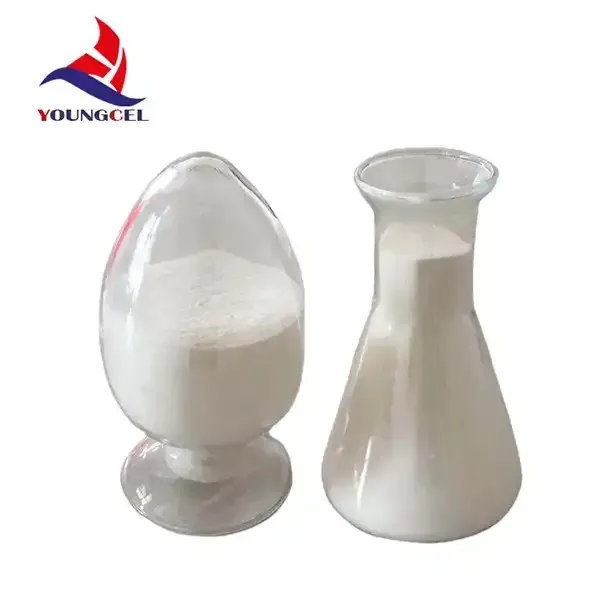Understanding Mortar Additives The Role of RDP and VAE Powders
In the construction industry, achieving optimal performance in mortar is crucial for the durability and stability of structures. One key aspect of enhancing mortar's performance is the incorporation of various additives, among which Redispersible Polymer Powders (RDP) and Vinyl Acetate-Ethylene (VAE) emulsions have gained significant attention. This article explores the role of these additives in improving the bonding capabilities and overall characteristics of mortar.
The Importance of Additives in Mortar
Mortar is a mixture of cement, sand, and water, which acts as a binding agent in masonry, plastering, and tiling applications. However, conventional mortar may not always provide the desired properties, especially in demanding environments. This is where additives come into play. They improve adhesion, flexibility, workability, and resistance to cracking and water penetration, thereby enhancing the lifespan of the structures.
Redispersible Polymer Powders (RDP)
RDPs are powdered polymers that can be re-dispersed in water, creating a film upon drying that provides exceptional bonding properties. These polymers are typically produced through a process of spray-drying emulsions, resulting in a powdery form that remains stable until rehydrated.
Once added to mortar, RDPs offer several advantages 1. Enhanced Adhesion RDPs improve the bond between the mortar and the substrate, ensuring a strong grip. This is particularly beneficial in demanding applications such as tile adhesives and renovation mortars, where surfaces may be less than ideal for adhesion. 2. Flexibility and Impact Resistance Mortars containing RDPs exhibit better flexibility and strain accommodation. This is critical in areas subject to thermal expansion and contractions, as well as dynamic loads from foot traffic or vibrations.
3. Water Resistance The hydrophobic nature of RDPs can enhance the water resistance of mortar, minimizing the risk of water-related damage such as mold or freeze-thaw cycles.
4. Improved Workability Mortars modified with RDPs have better workability, making them easier to mix, spread, and apply. This results in improved efficiency during application processes.
mortar additive bonding rdp vae powder

Vinyl Acetate-Ethylene (VAE) Emulsions
VAE emulsions are another type of polymer additive that can significantly enhance the performance of mortar. Like RDPs, VAE emulsions are designed to improve adhesion and flexibility. However, they are typically used in a liquid form before being mixed into the mortar.
The benefits of incorporating VAE emulsions include 1. High Adhesion Levels VAE emulsions provide excellent adhesion to a variety of substrates, including difficult-to-bond materials such as glass and ceramics.
2. Increased Durability Mortars formulated with VAE exhibit excellent weather resistance and longevity, making them suitable for both interior and exterior applications.
3. Compatibility VAE emulsions can be blended with other additives and materials without compromising the overall integrity of the mortar, allowing for tailored formulations to meet specific project demands.
4. Versatility These emulsions can be utilized across various types of mortars, including those used for masonry, tile setting, and rendering, thus allowing for widespread application in the construction industry.
Conclusion
The integration of RDP and VAE powders into mortar formulations represents a significant advancement in construction technology. By enhancing bonding capabilities, improving flexibility, and increasing durability, these additives provide invaluable support to achieve high-performance mortars tailored for specialized applications. As construction techniques continue to evolve and the demand for resilient materials grows, the role of these additives will undoubtedly become more prominent. By understanding and utilizing the benefits of RDP and VAE powders, construction professionals can ensure the longevity and strength of their projects, ultimately advancing the field of building materials.
-
Rdp Powder: Key Considerations for Wholesalers in the Building Materials IndustryNewsJul.08,2025
-
Key Considerations for Wholesalers: Navigating the World of Hpmc - Based ProductsNewsJul.08,2025
-
Hpmc Detergent: Key Considerations for WholesalersNewsJul.08,2025
-
Key Considerations for Wholesalers: China Hpmc For Tile Adhesive, Coating Additives, Concrete Additives, and MoreNewsJul.08,2025
-
Crucial Considerations for Wholesalers: Navigating the World of Construction MaterialsNewsJul.08,2025
-
Key Considerations for Wholesalers Sourcing Additive For Cement, Additive For Concrete, Additive For Putty from Additive Manufacturer Shijiazhuang Gaocheng District Yongfeng Cellulose Co., Ltd.NewsJul.08,2025




